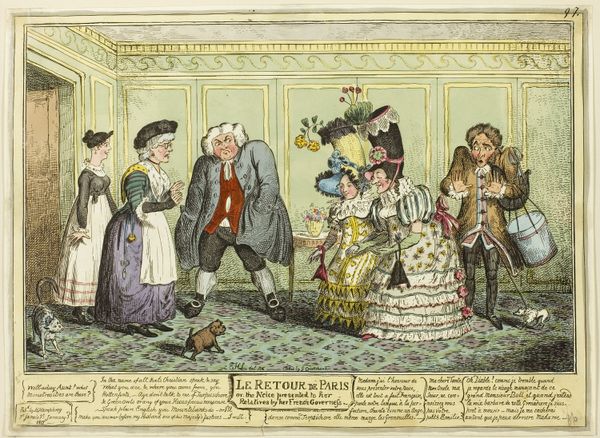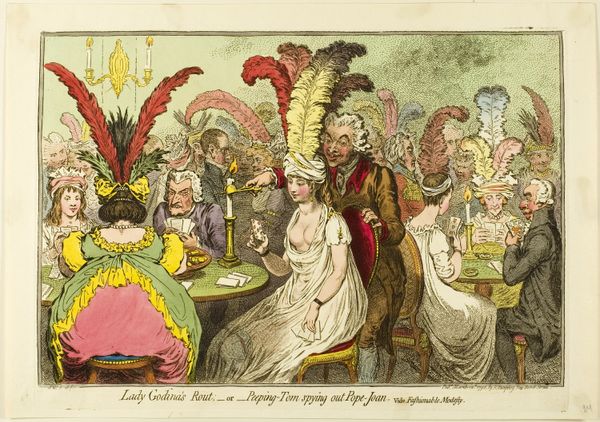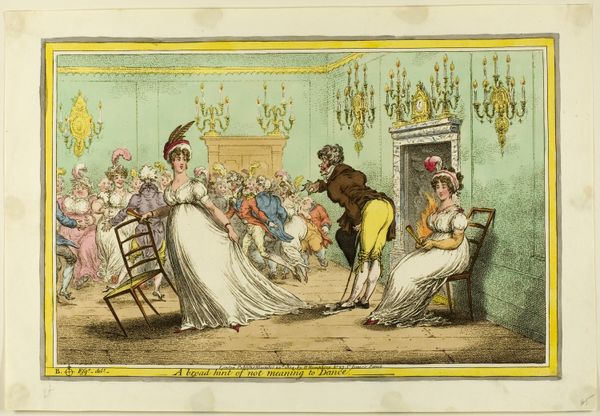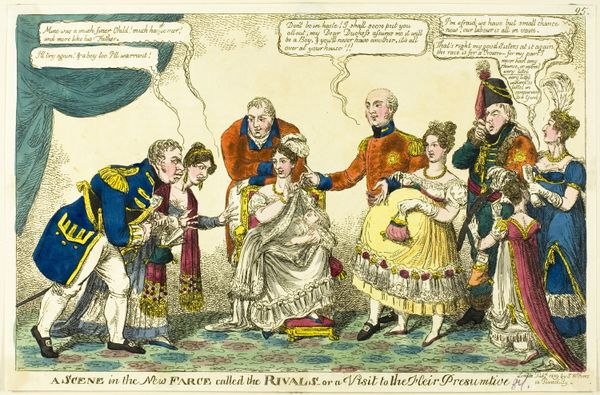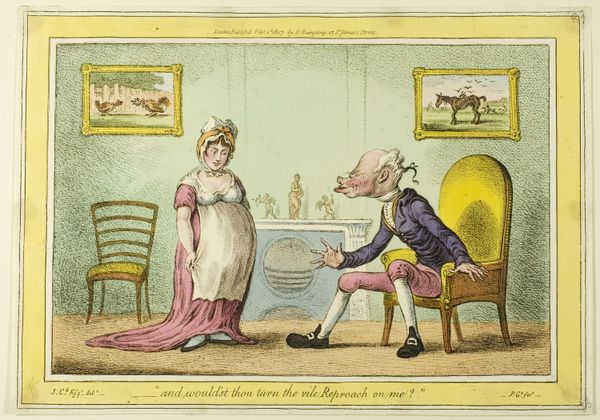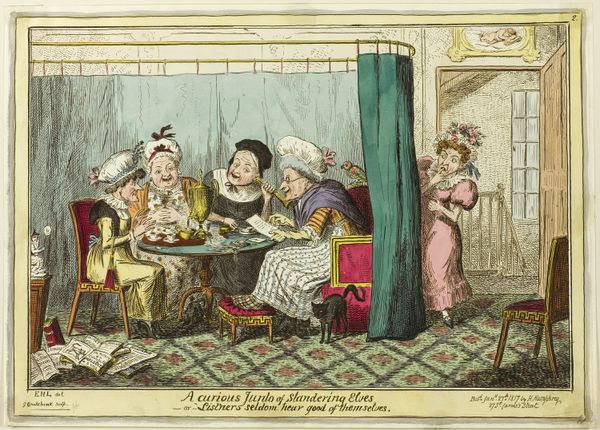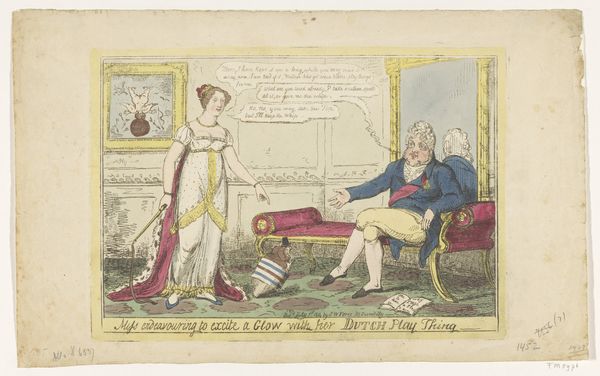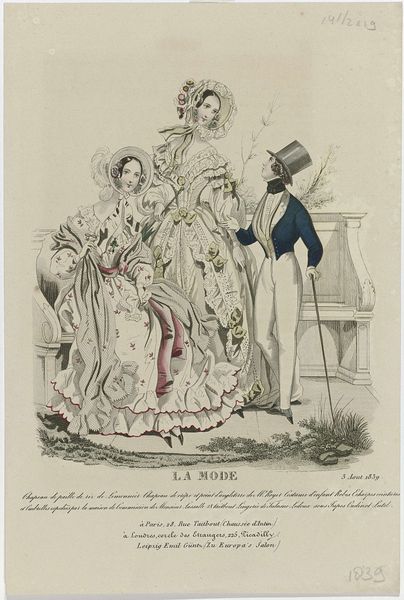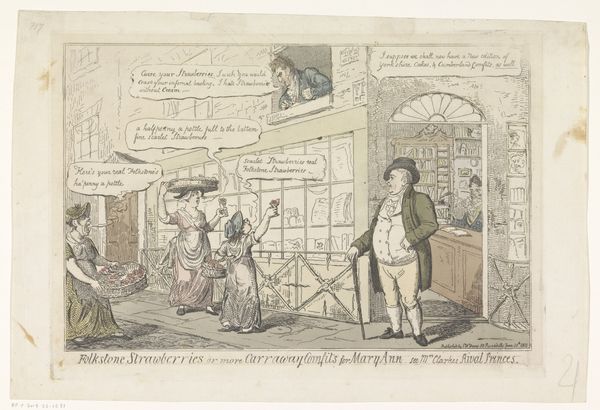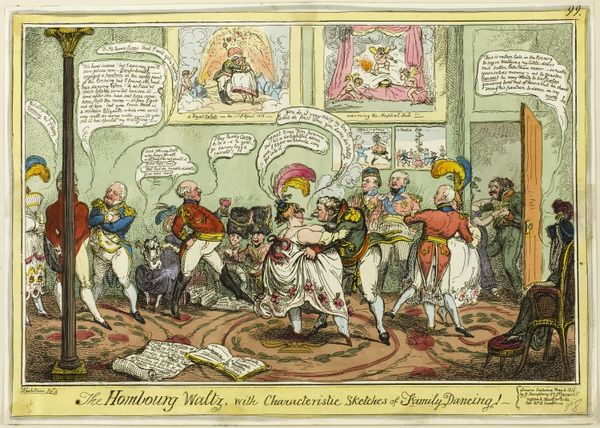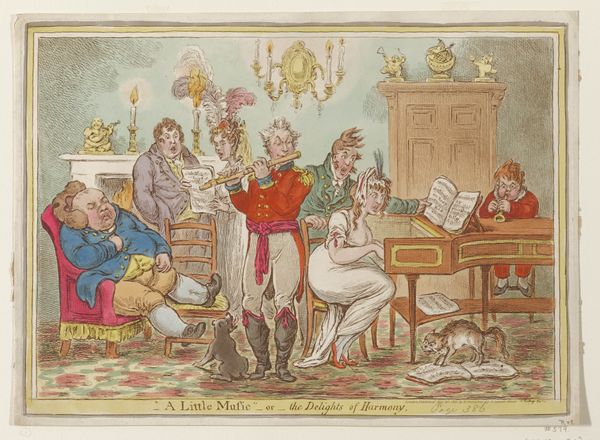
drawing, print, etching, paper
#
drawing
# print
#
etching
#
caricature
#
figuration
#
paper
#
romanticism
#
line
#
genre-painting
#
history-painting
Dimensions: 225 × 335 mm (image); 240 × 340 mm (sheet cut within platemark)
Copyright: Public Domain
Curator: Let's take a look at "A Dandy & a Dandyzette," an etching and print made around 1818 by George Cruikshank, now residing here at the Art Institute of Chicago. Editor: Well, my initial reaction is… unease. There’s something unsettling in the exaggerated lines, almost as if reality is subtly warping around these figures. Curator: Indeed. Cruikshank was a master caricaturist. Think about the production of prints at the time; etching allowed for mass dissemination of satirical imagery to a burgeoning middle class hungry for commentary on societal elites. These "dandies" were easy targets of critique regarding their lifestyle, consumption habits, and gender and social roles. Editor: The way he plays with line—look at how the sharp, almost brittle strokes define the man’s limbs against the softer, more rounded forms of the woman and her ornate chaise lounge! It emphasizes a fragility and superficiality inherent to their performance. The woman's lace bonnet in particular is quite arresting, the flowers looking somehow sinister instead of pretty. Curator: Consider how this image enters circulation within a complex economic framework. This etching, made for the purpose of easy printing and distribution, would be sold. We see art intersecting directly with early capitalist mechanisms and influencing cultural taste and societal judgements. Editor: I am drawn to how the color enhances this feeling, as well—almost as if it were applied carelessly, haphazardly. There is no tonal variance in these figures and no indication of three dimensions; the hand coloring appears added post-production rather than integral to the overall piece. It is striking against the flat perspective. The scene itself seems cramped. Curator: Right, but don't forget this piece also reflects anxieties about gender roles at the time; anxieties exacerbated by changes in labor practices and the roles that individuals played during the Regency Era. This imagery actively participated in a conversation about who was working, who was consuming, and who had power. Editor: I see what you mean, that the awkwardness of their poses combined with such direct linework might have evoked a very direct response from period viewers. Curator: Precisely! Hopefully our visitors gain a new perspective about this work—not just as a quirky period piece, but as an important material artifact deeply rooted in its social and economic context. Editor: I’d concur; taking in the image beyond surface impressions truly brings to light its impact and the sharp social observations it so artfully conveys through material production.
Comments
No comments
Be the first to comment and join the conversation on the ultimate creative platform.
